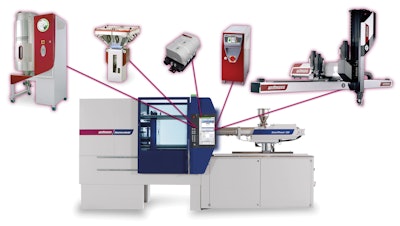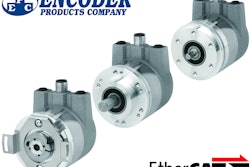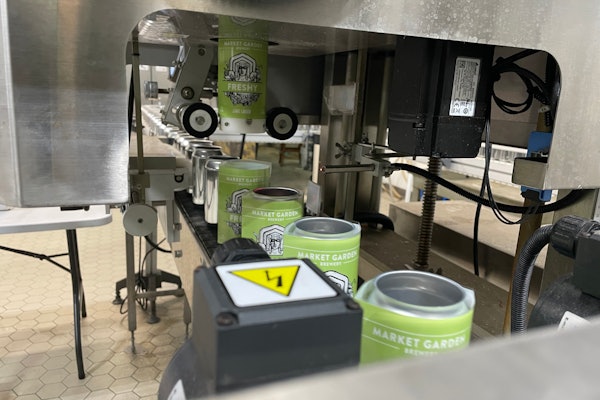Consumer preferences and demands are well-known for driving changes in the products brought to market by today’s manufacturers. And it isn’t just in the consumer goods sector that we see this happening. Original equipment manufacturers are equally attentive to consumer desires. The difference is that OEM adaptations tend not to get the level of coverage that an Apple or Johnson & Johnson do. But their changes are no less dramatic, and potentially even more impactful.
A prime example of this can be seen in Wittmann Battenfeld’s recent integration of manufacturing execution system (MES) software into the industrial machinery it produces.
Wittmann Battenfeld is a global supplier of injection molding machines, CNC robotics, labeling machinery, and auxiliary equipment such as dryers, blenders, and conveyors for industrial applications. As the industries served by Wittmann Battenfeld move increasingly toward smart manufacturing—via Industry 4.0, in particular, and the Industrial Internet of Things (IIOT), in general—the company saw the need to provide a turnkey solution to simplify the adoption of Industry 4.0 and smart manufacturing best practices for its customers. Wittmann Battenfeld viewed MES technology as a key aspect of this goal because the company wanted its machines to:
• Improve overall equipment effectiveness (OEE) through accurate, real-time insights into relevant production data, such as cycles and rejects produced;
• Achieve greater schedule accuracy, and optimize customer order planning and fulfillment using up-to-date, accurate data for planning and quicker recovery from problematic conditions; and
• Move its machines from prescriptive to predictive maintenance to optimize production scheduling and capacity.
Given the heightened interest in Industry 4.0, the company realized it would need to come to market quickly with this idea, which meant that it would need to partner with an MES provider rather than trying to build its own software.
Working with MES provider IQMS, Wittmann Battenfeld integrated production and process monitoring software into its latest generation of smart machines to give them MES functionality. “The Wittmann Battenfeld equipment provides the IQMS software with event, measurement, and status data captured using the equipment’s built-in sensor technology,” said Steve Bieszczat, chief marketing officer at IQMS. “The IQMS software captures, analyzes, and reports on shop floor status and progress based upon the information received from the Wittmann Battenfeld equipment.”
The built-in sensor technology used by Wittmann Battenfeld includes temperature probes, pressure sensors, and limit switches, says Dana Ford, who is in charge of material handling and auxiliary controls/technical for Wittmann Battenfeld. “These sensors are near the equipment for normal operations,” he said. “What is unique about them is that we have programs built into the equipment that can export their data to the IQMS system; for example: Euromap 63 for the injection molding machinery, OPC/UA for the Industry 4.0 peripherals, and OPC/DA for the central conveying system.”
Bieszczat notes that Wittmann Battenfeld uses a “patented Industry 4.0 routing solution to allow multiple different pieces of equipment to be aggregated for direct consumption through the IQMS Process Monitoring service/bus using connectivity standards, such as OPC DA/UA, CIP, and Profinet, among others. IQMS has out-of-the-box integrations to both Euromap 77 and Euromap 63. Using these out-of-the-box integrations and IQMS’ variable mapping tool—which is also available out of the box—it was simple to drag-and-drop the relevant process variables from the Wittmann Battenfeld devices to its representation in IQMS. Through this service, IQMS software is able to see, in a single place, information from every piece of equipment hooked into the smart machine and tie relevant data from the MES system to the data it receives directly from the equipment.”
Wittmann Battenfeld and IQMS began working on this project last year, with the first turnkey system showcased at the Plastic Industries Association’s NPE event in May 2018. The SmartPower 300 injection molding machine with the latest generation B8 machine control is an example of one of Wittmann Battenfeld’s products currently featuring this technology integration, says Ford.
“This routing solution also allows an auxiliary device to be moved between presses to immediately provide process data relevant to the press to IQMS without complex network rerouting,” adds Bieszczat.
Ford says these auxiliary devices are usually robots, dryers, blenders, temperature controllers or water flow controllers.
“The Wittmann Battenfeld equipment reports on 75-100 conditions and parameters per injection molding machine, as well as connected auxiliary equipment,” says Bieszczat. “The IQMS software captures this information in historian databases, which then are mined for counts, readings, conditions, and trends. The results of the data mining are reported as real-time production and process data in both a real-time charting application as well as dashboards and layout views. It also includes ODBC [open database connectivity] directly to the historian database for more strategic views of machine and process performance, predictions, and root cause analytics.”
By connecting directly to a Wittmann Battenfeld machine to pull relevant production data, the IQMS software uses its out-of-the-box OEE calculations to present real-time views of a plant’s efficiency, says Bieszczat. “If the IQMS out-of-the-box calculations don’t suit the user, IQMS offers a web-based dashboarding solution to allow user-defined OEE calculations that can be displayed on anything—from a tablet or mobile phone to an 80-inch flat screen in the middle of the plant floor,” he says.
Diving deeper into the three major OEE factors (availability, performance, and quality), Bieszczat says any of the three can have either equal or dominant effects on OEE. “A machine that is offline is obviously dominating OEE with a total lack of availability. The same can be said for a machine that is producing all bad parts or running terribly slow,” he noted. “That said, in most cases availability, performance, and quality all have roughly equal impacts on OEE. It is not so much which problem is dominant in the equation as much as which factor is hidden, and that only becomes apparent through OEE monitoring and analysis.”
By tracking process variables related to production—such as cycle time and process run time—directly from the machines in the IQMS software, users can learn the difference between “what they think their standards are and what they actually are,” says Bieszczat. “It’s usually a moment of discovery during a manufacturing run when the customer starts pulling data in real time and learns that their assumed 30-second cycle time is actually 35 to 40 seconds. IQMS software automatically stores that data and compares them to all machines that have ever run that job and informs the user which machines ran the job the best; it also provides that data to users to help generate improved production scheduling.”
Ford adds that it’s common for molders to swap out molds in their equipment to produce different parts. “The time saved here by implementing the Wittmann Battenfeld/IQMS system is significant for those users. All relevant data for the optimum performance of each mold is stored in the system for easy access and startup.”
Such time savings also apply to order planning and fulfillment too, notes Bieszczat. “Order planning and fulfillment are largely determined by MRP and scheduling software. However, if the machines are not running to the specifications assumed by the scheduler and materials planning, then customer service will be adversely affected. Coupling the machines with MES helps drive customer fulfillment execution with accurate planning data and enables quicker recovery from problematic conditions.”
This data is also used by the MES to generate preventative maintenance work orders for the equipment. “On top of that, IQMS users are presented with long-term trends in process variable data, such as heater band amperage, so they can visually see or calculate the potential trends in energy consumption that could lead to equipment failure, helping them move from preventative to predictive maintenance,” says Bieszczat.
“By integrating MES into its machines, Wittmann Battenfeld now has a practical Industry 4.0 solution for its manufacturing customers,” says Bieszczat. “Users can even set alarms on any process variable to trigger an alert before a process is out of control and producing bad parts. These alerts can be emailed, texted, or even announced across a shop floor, stopping a problem before it happens.”
Attempting to “optimize throughput without production and process monitoring is a trial-and-error process,” says Bieszczat. “With smart machines and MES, it is science.”
More resources for calculating OEE
Find valuable OEE resources, including free documents, calculators, webinars, and more by visiting the OpX Leadership Network at www.opxleadershipnetwork.org. Learn what constitutes OEE, how to calculate it, benefits that can be derived from its use, pitfalls to avoid, and more. Using these tools, manufacturers find that improvement in OEE enables a line to meet production targets in fewer direct labor-crewed scheduled run hours. Download a free OEE Benefits Calculator, the free OEE Starter Tool, and much more at pwgo.to/3781.
Get Big Data guide
While the use of data in manufacturing processes is not new, the potential shift in scale of the type, volume, and frequency of data collection is. This opens the door for new applications but also challenges how larger volumes of data are used.
How should Big Data be collected, handled and processed? According to a new white paper by PMMI Business Intelligence, there are a few areas that should be considered for data acquisition:
Infrastructure investment
Existing sensing capabilities, networks, data acquisition computers, and local servers should all be considered. The level of investment varies, as some companies are ready to support a “digital path” strategy while others need to replace or retrofit large parts of the existing infrastructure. Upgrading bandwidth on networks, installation of additional sensing technology, or investment in local or remote data storage (local servers or access to third party infrastructure) are common expenses.
Data collection
Inclusion of sensing on all assets can be extensive and quickly reach a point of diminishing returns. Asset prioritization can help to identify the impact of downtime on equipment in the production processes vs. the cost of adding sensing and networking and the ability to process and work with the additional data.
Data aggregation and analytics
Changing how data is collected and how frequently can be a challenge. Changing from collecting data once every quarter to every five minutes will create a larger volume of data for aggregation and processing, at a faster rate. Additionally, new sensors introduce new measurement parameters and increase the variety of data to be collected and analyzed.
Software tools
Many end-users of IIoT technologies indicated that development of the user interface (UI) was challenging.
• UI’s must be easy to use for all staff, not just IT professionals.
• The UI must be able to convert information to helpful insights that guide workers to the actions they need to take.
• Solutions must be adjustable to different screen formats.
Download the full white paper detailing how Big Data can benefit the packaging and processing industry at pwgo.to/3782. —Kim Overstreet



























